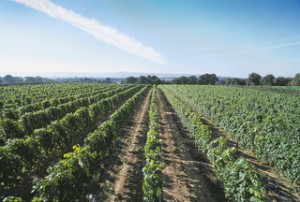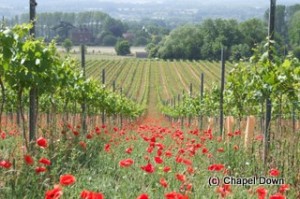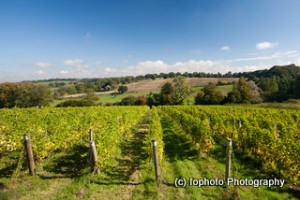The future of English sparkling wine
This article first appeared in Harpers Wine and Spirit, May 6, 2011.

Ridgeview
English wine is the flavour du jour, but is it set up to capitalise on the recent awards and consumer demand?
Total production is currently tiny, around three million bottles. And 2010 marks a tipping point. Julia Trustram-Eve, marketing manager for English Wine Producers, said “it will be the first time that sparkling wine production has exceeded still wine production.”
Producers are confident about the domestic market, citing the 100 million bottles of sparkling wine consumed each year, around 35 million bottles of which are Champagne. Of the 65 million bottles of non-Champagne, only 1% sells for more than £10 – which is where virtually all UK sparklers are or will be pitched, many at £20 and above, though producers are aiming to take market share from Champagne.
Ian Kellett, managing director of Hambledon Vineyard, is bullish on the market potential, saying “It’s already proven beyond doubt that the UK is the second best sparkling wine region in the world. We [the UK] need to be a 10, 20, 30 million bottle a year business.” And he was really just talking about sparkling wine. Whatever the ultimate size of production Mike Roberts of Ridgeview reckons “still wine will represent about 10% of the market” in five or six years’ time.
One of the most recently announced ambitious newcomers, ex-hedge fund manager Mark Driver, who has bought a 600 acre farm in East Sussex, called Rathfinny, with plans to plant around 400 acres, was equally bullish, saying “I think there’s increasingly a very good market for English wine. I’m the target market for English sparkling wine, but a year ago I’d never heard of Nyetimber or Ridgeview. And there’s a growing market for sparkling wine in Asia and North America, where there is an affinity to certain good quality English products.”
It may need the likes of Driver to take the UK industry to the next level, as the main barrier to entry is the cost of set up and the delay between harvest and market, hence the splurge of City émigrés. With up to eight years to plant, make and get to market, financiers with plentiful resource are a necessity.
Driver spent around £3.5m buying the farm and land, and “will invest a similar sum in the next five years, planting, building a winery and equipment.” Their first sparkling is unlikely to be on the market before 2017, and he added “I would hope in 10 years time we start to make some money.”
Kellett expects to invest even more to get historic Hambledon Vineyard back up and running, saying “at the end of the day it will cost us £10m plus to build the business we want to build.”

Chapel Down
The initial objective, he said, is for 250,000 bottles, and “the core plan is to way beyond that.” A £4 million fundraising project closes before the end of January 2011. Kellett said before he went “to the world to ask for £4m” he had to prove his credentials, so for the last three years they’ve been selling grapes to the leading UK producers of sparkling wine “demonstrating to my satisfaction that we are producing the right standard of grapes.”
Someone who has always declined the opportunity to put a figure on the amount he’s invested is Eric Hereema of Nyetimber. When he bought the property in 2006, just 34 acres were planting producing around 60,000 bottles. Hereema said “since the most recent planting, we have over 400 acres under vine, not all producing yet. Our target production is 1 million bottles, on average”, which will make him the UK’s biggest producer.
The company is not yet exporting as Hereema sees more potential in the domestic market, saying “all our sales activity is focused in the UK, [but] ultimately we will export. We constantly receive requests from abroad, but at the moment we don’t think it will help the brand.”
Hereema said he hoped to make a profit in about five years’ time. Arguably Nyetimber’s main competitor, Mike Roberts, said Ridgeview “became profitable in 2000, our first full year of sales.” Now, he said, from 170 acres they are making around 250,000 bottles of sparkling, and they’ve just doubled the size of the winery, to cope with 400 to 500m bottles, so there’s still plenty of room to continue the expansion, though Roberts’ plan is now to “create markets and open doors.”
Along with Ridgeview, the industry’s one publicly listed company, Chapel Down, follows a ‘Champagne model’ of sourcing fruit from a “great many vineyards, including established growers who’ve grubbed up the likes of huxulrebe and planted Champagne varieties”, said their managing director Frazer Thompson.
Having raised £1.5m in 2004 plus another £1m about a year ago to finance their 72-acre vineyard expansion in Kent’s North Downs, Thompson said “we have to make it clear that wine is a long term investment and it depends on weather. Our plans were set back by 2007 and 2008 being very low harvests. We needed to be nimble to compensate for that.” They’ve increased prices, invested in Chapel Down branding, opened the restaurant ‘Richard Phillips at Chapel Down’ to increase the destination value of Tenterden, and been selling more wine direct.

A'Beckett's Vineyard
On a more modest 30 acres in Hampshire, AXA Millesime’s managing director Christian Seely has joined forces with ex-city financier Nicholas Coates to create Coates and Seely sparkling wine. Coates said “Clearly we love wine, but this is a business venture, we’re persuaded the economics stack up. For people who know what they’re doing and have a track record in the production of high quality wine, we’re confident we can make and sell it economically.“
Another 30 acres under vine (on a 400 acre estate) is to be found at Hush Heath Estate, the home of Balfour sparkling rosé, which has grown from 4.75 acres since 2002. The target production for owner Richard Balfour-Lynn, who doubles as the chief executive of a property company that owns the likes of Malmaison and Hotel du Vin, of 100,000 bottles is five times that of the currently released 2006 vintage. Coates and Seely’s winery is also configured for 100,000 bottles.
Balfour-Lynn is clear of his competitive set, saying “pink sparkling is one of the areas the Champagne houses don’t do so well as white, so I decided to challenge them on that. I’m competing with Laurent Perrier Rosé and Billecart Salmon Rosé.”
With as RSP of £37 the aim is high, but he said, branding is “part of positioning, creating a brand and creating a following. The quality is critical, but equally critical is branding, marketing and the PR that goes behind it. We use copper labels and solid copper ice buckets,” adding “the challenge for the English wine industry is to invest that type of money into marketing.”
Confidence in market potential is not restricted to the large scale. At the other end of the spectrum, where personal money is not an option, fundraising remains a necessity, and some innovative approaches have been adopted. And the key at this level is to keep the brand local and focused.
Paul Langham, of A’Beckett’s in Wiltshire, started a vine lease scheme in 2009 where vines are rented for 10 years. He said “vine lease was a way of expanding the business without going near a bank, or taking on an investor.” And “finding the right investor could take a very long time, and so much heart and soul gone into this, how easy would it be for us for us to cede some control? This is a family business with community involvement.”
A’Beckett’s will reach 5.6 ha if the 2011 offer is fully subscribed. If they’d been bigger, he said the route to finance might have been different. But retaining the small, community feel and ‘add-ons’ such as plans for a rural shop and ‘outdoor’ education rooms is important for his brand.
Upfront investment by vine leasing is the option also adopted by 22-acre PebblebedVineyards in Devon, which started off as half an acre on a south-facing field. Geologist and owner Geoff Bowen said “we’re only just breaking even after 7 to 8 years”, after investing five figures of his own money during the last decade. He drew attention and local investment after succeeding in the Dragons’ Den where so many others have been slain.
Their scheme asks for £2,000, “a figure which people might be able to invest.” And, Bowen said “the scheme is also about involvement, the process of planting, watching the grapes grow, making wine. People will get their money back in bottles, vineyard tours and lunches over ten years.”
It’s clear that supply is not keeping pace with demand for English sparkling wine, and this is the great unknown, because UK sparkling wine is generally on allocation or not widely distributed. But crunch time is just around the corner. Trustram-Eve said “there‘s not much market-ready wine out there. Approximately 1.7m bottles of sparkling wines will be on the market for next year, with 2015 showing about 3.6m bottles coming to market.”
Dream or reality? If just 10% of Champagne buyers move to English sparkling wine, then the market for English bubbly trebles.



